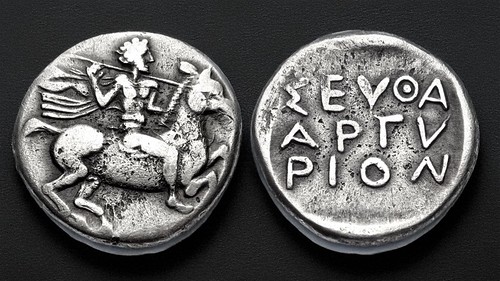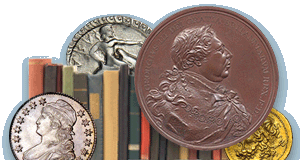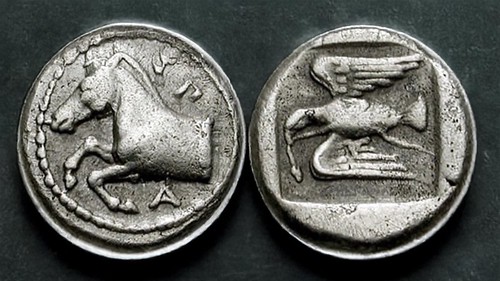
PREV ARTICLE
NEXT ARTICLE
FULL ISSUE
PREV FULL ISSUE
COINS OF THRACE'S WARRIOR KINGSMike Markowitz wrote an article in CoinWeek on the coins of Thrace's warrior kings. -Garrett Thrace is a historic region in the southeastern corner of Europe, encompassing modern-day Bulgaria, the European part of Türkiye, and a small portion of northern Greece. Ancient Thracians were a warlike tribal people known mainly through the writings of their Greek neighbors and the magnificent tombs where their kings were buried. The Thracian Odrysian kingdom ruled much of the region from approximately 460 BCE until it was absorbed by the Macedonian king Philip II, the father of Alexander the Great, around 340 BCE. Odrysian cavalry served as scouts in Alexander's army. The Odrysian kings produced a fascinating series of coins that have been extensively studied by Bulgarian numismatists and other scholars in recent years. Although intriguing, this coinage was of limited output and had a moderate impact on the overall pool of money in circulation in Thrace from the fifth century to the middle of the first century CE. The available statistical data demonstrate that such coinage should be regarded more as a powerful symbolic claim by the kings of Thrace rather than as a regular currency with economic value. The sequence of rulers and their coin issues remains uncertain in some cases. Key Rulers and Their Coinage The Odrysian kingdom was founded by Teres I, who ruled c. 460–445 BCE, uniting some 40 different tribes into a powerful state. Sparadokos His son, Sparadokos, who ruled c. 445–435 BCE, was the first Odrysian king to issue coins in his own name. His name is abbreviated as S?A ("SPA"). Three denominations in silver were struck, probably at the Greek city of Olynthus, which had extensive trade with Thrace. The diobol (about 1.5 grams) shows the front half of a running horse on the obverse and a flying eagle with a snake in its beak on the reverse. Seuthes I 
Seuthes I or II. c 424-405 BCE or 405-386 BCE. Silver Didrachm 8.56 g,. Topalov 71 the second known (the other in the Bibliotheque Nationale in Paris). Seuthes I, who ruled c. 424–405 BCE, was a son of Sparadokos. Only about half a dozen silver coins in the name of Seuthes are known, and there is some uncertainty about whether they should be assigned to him or a later king of the same name, Seuthes II, who ruled c. 405–386 BCE. A cataloguer writes of Seuthes I that he: is ingloriously remembered for ending the campaign of his uncle King Sitalkes in Macedon, after allowing himself to be bribed by the Macedonian king Perdikkas II. Thucydides speculated that Seuthes had a hand in the death of his uncle, to whose throne he succeeded in 424 BC. Yet, under his rule, the Odrysian kingdom grew to new heights of power and wealth. A very rare silver didrachm (8.56 grams, only two examples known) bears a horseman brandishing a javelin, with the bold inscription SEYTA/APGV/PION ("Silver of Seuthes") on the reverse.
To read the complete article, see:
Wayne Homren, Editor The Numismatic Bibliomania Society is a non-profit organization promoting numismatic literature. See our web site at coinbooks.org. To submit items for publication in The E-Sylum, write to the Editor at this address: whomren@gmail.com To subscribe go to: Subscribe All Rights Reserved. NBS Home Page Contact the NBS webmaster 
|

